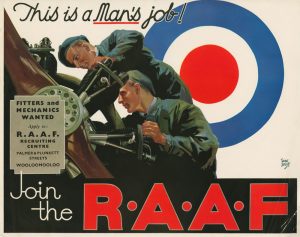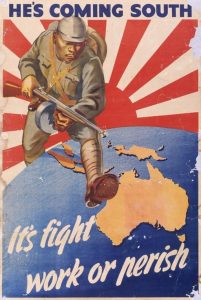Secret Communication Installations
During World War II, the Australian Defence Force (ADF) operated secret communication installations all over Australia to assist the Allied Forces in the Pacific. These communication installations were sometimes called “Earth Covered Semi Underground Signals and Cypher Buildings” and were designed to be covered by dirt with only the entrance, the air intakes and emergency exit exposed.
We knew the Japanese were eavesdropping on our military communications, giving them a tactical advantage, and needed a way to defend ourselves.
The Royal Australian Air Force (RAAF) built a number of these secret buildings in rural Adelaide and throughout Australia and they made a vital contribution to the Allied war effort against the Japanese during WWII. They were built in total secrecy. So secret in fact that little is known about these facilities and how they operated.

RAAF Signals Intelligence (SigInt) Unit
In 1941, the Australian Government approved the setting up of our first intercept and cryptographic organisation. The Defence department trained Australian Defence Force personnel to intercept Japanese military traffic and to learn Japanese Morse Code (Kana Code).

The Kana Code
Sigint personnel faced two enormous problems: the complexities of the relatively unknown Japanese language, and the fact that the Japanese had devised their own form of Morse Code, known as the Kana code, for their naval and military operational messages.
Kana Code consisted of 71 kana symbols and a few punctuation symbols.
The RAAF interceptors
An initial group of 7 RAAF and 2 Australian Army operators became proficient in the kana code after intensive training. Arriving in Darwin in September 1941 they began work at two receiving stations. By July 1942 the RAAF intercept operators had dramatically increased to 29. They were posted throughout Australia at undisclosed locations.
The Japanese Crypto System
The RAAF interceptors ability to interpret Japanese military signals was hampered by the Japanese crypto systems – some messages were sent encrypted. Even though signals could be intercepted and decrypted, due to regular cryptographic key changes, often messages were not able to be fully decrypted until after the event.
The severe American-Australian defeat in the naval battle of the Savo Islands, where HMAS Canberra and three US Navy heavy cruisers were lost, can be attributed to the difficulty of decrypting messages due to a crypto-key change.

Breaking the Code
After the Australians captured the city of Sio on the Huon Peninsula, Papua New Guinea, troops using mine detectors to clear an area of land mines, uncovered several steel boxes in a deep, water-filled pit. When opened, they contained the current Japanese army high-grade code books, abandoned by the retreating Japanese commander.
The Japanese were unaware of the loss.
The information contained within the code books were immediately shared with Australian RAAF interceptors so they could decipher traffic in this top-level code, (which had previously been very difficulty, sometimes impossible to read) immediately on receipt, with devastating consequences for the Japanese.
This breakthrough had an important effect on the subsequent course of the war against Japan in the South Pacific, as it permitted code-breakers in Australia and the United States to read Japanese Army messages on a much greater scale than previously.
Adelaide’s Remote Recieving Stations

None of these accomplishments could have occurred if it weren’t for the men and women of the ADF intercepting Japanese military traffic from within Australia’s Remote Semi-Underground Signals and Cypher Buildings built by the RAAF during World War 2.
A lot of Adelaide’s Remote Receiving Communications Bunkers have outlived their usefulness and been destroyed. A small number have been converted to living spaces while most have been vandalised. Others however sit silently on rural Adelaide farmland, forgotten by most and only known by a few.


















